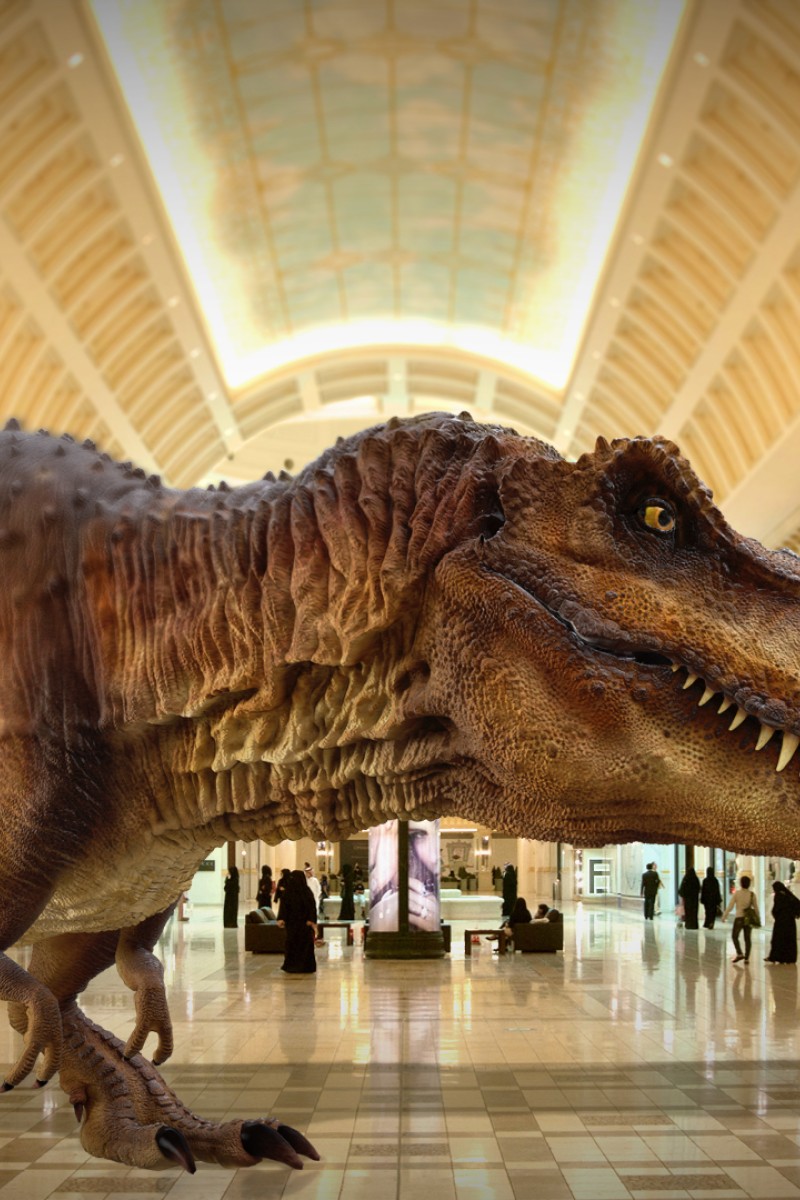 With AR, you can use your mobile device to make this digital dino appear at the mall ... or, better yet, inside your classroom.
With AR, you can use your mobile device to make this digital dino appear at the mall ... or, better yet, inside your classroom.Imagine holding your phone or your tablet in front of your textbook and seeing all kinds of three-dimensional images on your screen moving around on the pages.
That's Augmented Reality (AR), and it allows you to get more out of the basic learning tools. It's pretty cool because it can give you a better understanding of the real size and shape of an object.
Because of its educational possibilities, schools around the world are becoming interested in this new AR technology.
Tech company Inde didn't originally make products for educational purposes. In the past, the company built systems for BBC World Wide's nature documentary series Frozen Planet, and 20th Century Fox's Walking with Dinosaurs. Now the company is hoping to show that its technology can be used to teach, not just entertain.
Young Post caught up with the CEO of Inde, Alex Poulson, to discuss the possibility of bringing this technology to Hong Kong schools.
The company was brought to Hong Kong through the GREAT Britain Campaign, an international marketing campaign which showcases the very best of what Britain has to offer.
Poulson believes this technology could be used in schools within five years.
One of the main problems with introducing new, advanced technology into schools is that teachers would need to learn to use the equipment. Sometimes this could mean days or weeks of training, but demonstrations prove that AR technology is very easy to use. In fact, Poulson calls it a "barrier-free" way to display content.
Another issue with installing this type of technology in schools is that people assume it will be outdated within five years. However, Poulson notes: "Whenever we install anything, we install a back-up system and everything has remote access in real time, so refreshing content and installing updates are all done."
While Inde has its own, original content, it is willing to create new material on demand for specific subjects such as chemistry or history.
For history, AR would allow students to learn from the object or the person that was there at the time. For example, if students were studying the Sino-British Joint Declaration, AR would allow prime minister Zhao Ziyang and British premier Margaret Thatcher to appear at the front of the room to sign the papers.
One of Inde's key elements is that they mix entertainment into education, allowing students to physically interact with the content in front of them.
"If you place them [students] inside it, it is more of a tactile experience, then you're going to find that they will spend an hour standing in front of that screen," Poulson says.
"The idea that you can transfer some of that into the education system is very, very powerful."
Having this technology will not only allow for a deeper educational experience but will give new life to the learning experience.
As technology continues to develop, virtual reality (VR) will eventually take over from AR as the leading technology. But as VR is still incredibly expensive, AR is the most suitable technology for today's market.
Realistically AR could be in schools by 2020, allowing for an enriched education that will reinvent the classroom for students in Hong Kong.
